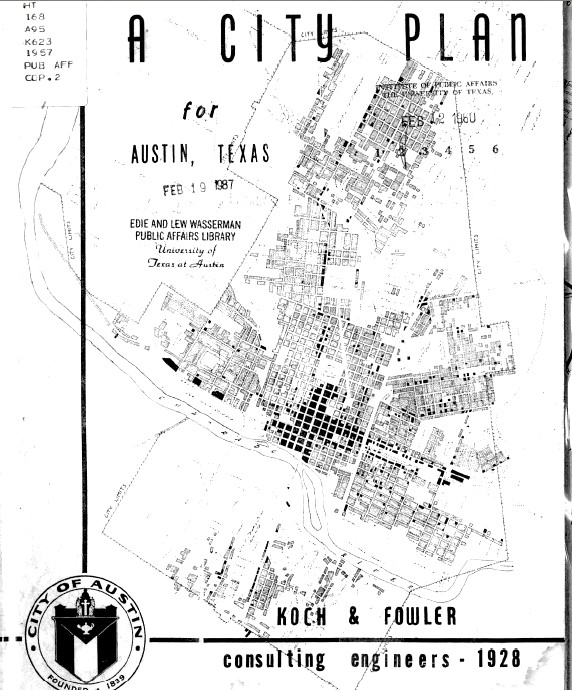
A City Plan for Austin, 1928
Racial segregation and discriminatory laws were still a fact of life for African Americans in the South for more than a century after emancipation. Those who left the rural farming life for the cities in the early twentieth century still could not escape it. For many years, the white leaders in the city of Austin debated how to deal with the negro population. In 1928, an engineering firm working for the city came up with a solution that was published as the City Plan for Austin, Texas. This historical document reinforces the degree of racial discrimination that existed in Texas and across the South. The authors of the City Plan noted that “negroes” lived in small numbers all over the city but were most concentrated in a specific area of east Austin. They decided that this area should be established as the city’s “negro district.” They would then encourage all the negroes in the city to move there, which would help the city’s budget because they would not have to provide separate facilities for African Americans in other parts of town. Page 57 of the City Plan states:
…It is our recommendation that the nearest approach to the solution of the race segregation problem will be the recommendation of this district as a negro district; and that all the facilities and conveniences be provided the negroes in this district, as an incentive to draw the negro population to this area. This will eliminate the necessity of duplication of white and black schools, white and black parks, and other duplicate facilities for this area.